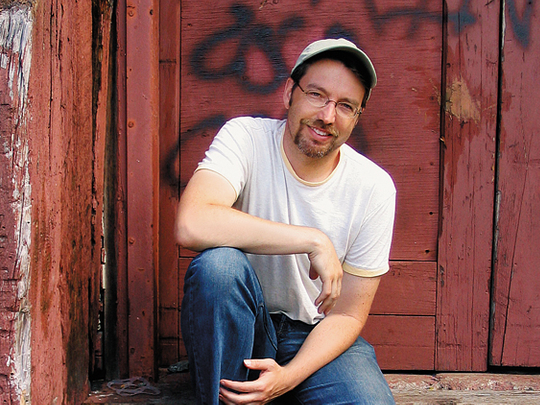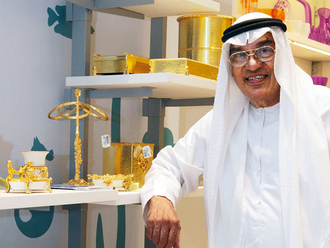
On my way to work in the morning, I frequently see an old man walking his tiny but very round Chihuahua just by Yost Park in Edmonds. Even though I do not know him, he seems kind - dressed in his wool coat and cap, shuffling along and caring for his pet. The regularity of these walks (in rain or shine) impresses me, and I am sure they are good for both the old man and the dog.
One morning, instead of walking the Chihuahua, the old man was carrying his pet in his arms. As I glanced over, I could see the grey muzzle of thetiny dog. I had a sudden feeling of concern for them: was the Chihuahua not feeling well this morning? How sweet of the old man to carry the dog along, continuing on their morning walk so that they could both enjoyit comfortably.
I hope to see the old man with his Chihuahua again soon. I haven't seen them in a while and hope that it has just been my timing. The next timeI see them, I am tempted to stop and talk with them, and hear their story.
This is Nikki's response to assignment six: put yourself in another person's place. She titled it Moment of Empathy on the Street. Her post is among hundreds who practise kindness, facilitated by Andy Smallman, class instructor and founder of the Seattle-based Puget Sound Community School (PSCS). Each assignment, or as Smallman likes to put it, "theme" has a purpose. It could range from asking people to ‘Do something kind for someone you love' to ‘Do something kind anonymously' or ‘Do something kind for someone you do not like'.
So, students practise unwonted acts of kindness by picking drama partners they aren't fond of, taking meals over to sick friends or smiling at people they aren't close to.
Smallman has facilitated classes on kindness since founding PSCS in 1994, first offering in-person classes for the school's enrolled youth and then extending the concept globally via email and the internet. He didn't realise how popular his classes would be. Today, he teaches as many as 250 students from around the world.
A kindness class?! We've heard of different ideas that have been translated into curricula. There is the US-pioneered course called Resilience - dubbed as happiness lessons - to develop children's emotional intelligence and improve psychological well-being. (By 2011, all students in England will receive lessons in emotional skills and happiness.) Then there is a growing academic discipline called politeness studies and a Journal of Politeness Research.
But a kindness class? Why do we need to study a quality that is intrinsic to our nature? Bring to mind Mark Twain's words: kindness is a language which the deaf can hear and the blind can see. Why do we have to learn it?
Smallman, who lives in Seattle with his wife Melinda and their two daughters, Chloe and Ella, doesn't think kindness is something we learn or that we are taught any more than we learn to breathe or make our hearts beat. He says it is natural. "But unlike these two processes that go on automatically, kindness is something we have to engage in mindfully. My class is more like a gentle reminder or an opportunity to get back in touch with a natural part of being human. Part of what makes [the kindness class] so popular is that it taps into something that resonates with people, takes them to a part of themselves that feels pure."
The probity and passion of his efforts is there for Smallman to read in the form of summaries posted by participants. "Being part of the process of making people feel better about themselves is extremely gratifying and humbling," he says.
"I also recognise that the experience people have in the class is completely related to their own efforts. I'm not ‘making' them do or feel anything; they are doing that for themselves. I see my role as more of a conduit; we all at different times serve this purpose for others - providing opportunities for people to return to an awareness of their own humanity."
Let's backtrack, shall we? It is all very well that someone like Smallman is presenting opportunities for people to become more fully aware of something they already know. But what is true kindness?
Understanding kindness
Scientists have decoded love, proving that it is nothing more than a chemical reaction of adrenaline, dopamine and serotonin. Then there is psychological research that has delineated three factors that contribute to altruism: empathy, helpfulness and opportunism. Wonder if kindness will one day be medically deconstructed as well?
Such research is of little interest to Smallman. He doesn't want to understand the chemical reaction taking place when he feels love, for instance. "I don't need to understand it to appreciate what I feel when I consider my wife's eyes or gaze upon my sleeping children."
Thus, for him, kindness is an act of love with no expectation of payback. "At its root, it is a demonstration of respect for the interconnectedness of life, a recognition that everything is related. Because of this, I often say that every kind action we take is ultimately kindness to ourselves."
One of the world's most respected transpersonal psychologists, Piero Ferrucci, explores the many surprising facets of kindness and argues that it is this trait that will not only lead to our own individual happiness and the happiness of those around us, but will guide us in a world that has become cold, anxious, difficult, and frightening.
In fact, Smallman uses books written by Ferrucci in his kindness class. Like the author, he sees kindness as supremely significant at this point in human history. He believes that by practising kindness we can address individual mental health issues and transform human relationships (both large and small). The intangibles of kindness are many, he says. "The most common is people feel happier and more connected to others. Additionally, perhaps they feel more self-aware."
Still some people are kinder than others. Does the rigour behind the nature versus nurture construct explain the difference? For Smallman the question carries with it a negative judgement. He says, "People are kind to the extent they are aware of their humanity. It isn't fair to compare one person to another like there is some sort of kindness quotient. Rather it starts to defeat the purpose of something like my kindness class. This view isn't helpful in understanding kindness either."
If one must explain using the logic supporting the nature versus nurture argument, he says we need to understand it is natural for humans to be kind. "As we grow and develop, we become sophisticated. We can also grow suspicious. Thus nature is the soil and the seed. Nurture is the type and amount of fertiliser. Expose people to limited fertiliser, they become suspicious and fearful. Hence it's harder for these people to reengage in kindness."
The kindness class
It was back in the mid-Nineties when Smallman first offered an email-based online kindness class. He was working with a group of middle school students in a series of in-person "random acts of kindness". Emboldened by the results, he thought of providing a structure for people all over the world to consider and practise kindness.
"It has evolved from my personal experience and beliefs. Turning it into a curriculum, I imagined concentric circles moving outward from the self to those closest to the self, then to strangers, and so on," says Smallman.
In the kindness class, he asks students to focus on a specific act of kindness (through themes). As mentioned earlier, he used to refer to these as assignments, but realised that the term was too demanding. "A theme is more in tune with what I have in mind. It encourages people to think for themselves, freeing them to interpret each one in a way that is personally relevant," he says.
Almost contradicting himself, he says every theme in many ways is the same - to bring mindful attention to our natural and common humanity. "Perhaps like how sitting in a different seat at a sporting event would give you a different perspective on the game. It's still the same game. You just see it differently based on your vantage point. In that way, there are an infinite number of vantage points from which to examine kindness."
The themes he talks about are based on the book The Power of Kindness: The Unexpected Benefits of Leading a Compassionate Life by Ferrucci. Smallman chose it because he found himself drawn to it.
"I had not read it before and its layout - each chapter focusing on a character trait - seemed conducive to providing focus to a more advanced study of kindness. I have used two other books in the past, trying to accomplish similar goals, The Kindness of Children by Vivian Paley and The Kindness of Strangers by Mike McIntyre."
Thus each Sunday night, he posts a new theme for the upcoming week via email and on the class blog.
"Then I hope the students take time to consider how to complete it. By the end of the week they post a summary of what they did. The following Sunday I then post my reflections," he says.
While Smallman speaks in context of a class, he says it's important to understand that there are no deadlines, grades or expectations other than trying to get the most from the experience. "A typical class will run from 10 to 15 weeks. The people who participate in my kindness class are adults, though children are welcome. Sometimes families participate together, parents adapting the themes for their children."
Ripples of kindness
If you go by the mechanism of social contagion (think medical sociologist and doctor Nicholas Christakis and political scientist James Fowler), you would think that kindness can spread easily too. In other words, one kind act will beget another.
Smallman says, "When we are kind, we begin to notice the kindness that surrounds us. To speak metaphorically, exercising one's ‘kindness muscle' helps us see more kindness. Seeing more kindness, we value it more. Valuing it more, we practise it more. In this way, kindness can be spread. To say one kind act begets another is accurate on a superficial level. On a deeper level, acts of kindness are so connected that to separate them doesn't really make sense."
And so it is, with any act of kindness, the anodyne gesture in our lives: it connects us to our humanity.
Idea of reciprocation
Modernity has reduced violence and made us more noble, or so goes the idea propounded by Harvard professor, psychologist, cognitive scientist and author Steven Pinker. According to him, we cooperate with each other because we believe that if we do favours, those favours will be reciprocated.
Smallman's kindness class is an example of Pinker's theory and how we are becoming less violent. But for Smallman the view that people only do favours when they think they will get favours in return doesn't work on a deeper level. He says, "This is true on a superficial level and it has nothing to do with true kindness, which is doing something without expectation of return, other than the good feeling one gets for completing the act. Further, if one truly believes in the interconnectedness of human beings - that my well-being is tied to your well-being - then this idea of reciprocation is of little value."
Politeness versus kindness
Smallman recognises that there can be an overlap between being polite and being kind. He says, "You can be both polite and kind at the same time but that doesn't mean the same. Both are important, but kindness is an act of love that comes naturally to us. Being polite comes more from the head; being kind comes from the heart.
"Politeness is a social custom that helps make society work better. As an example, it is polite to stop at a red light; doing so however is not necessarily an act of kindness. So I think a lot of people aren't really clear on what it means to be kind, confusing it with things like being polite. As people come to better understand kindness, they will naturally embrace it.
"Again, I think it resonates with us as human beings because it taps into what it means to be fully human."
For more info on Smallman's classes, log on to http://pscspracticeofkindness.wordpress.com or go to http://pscspowerofkindness.wordpress.com












